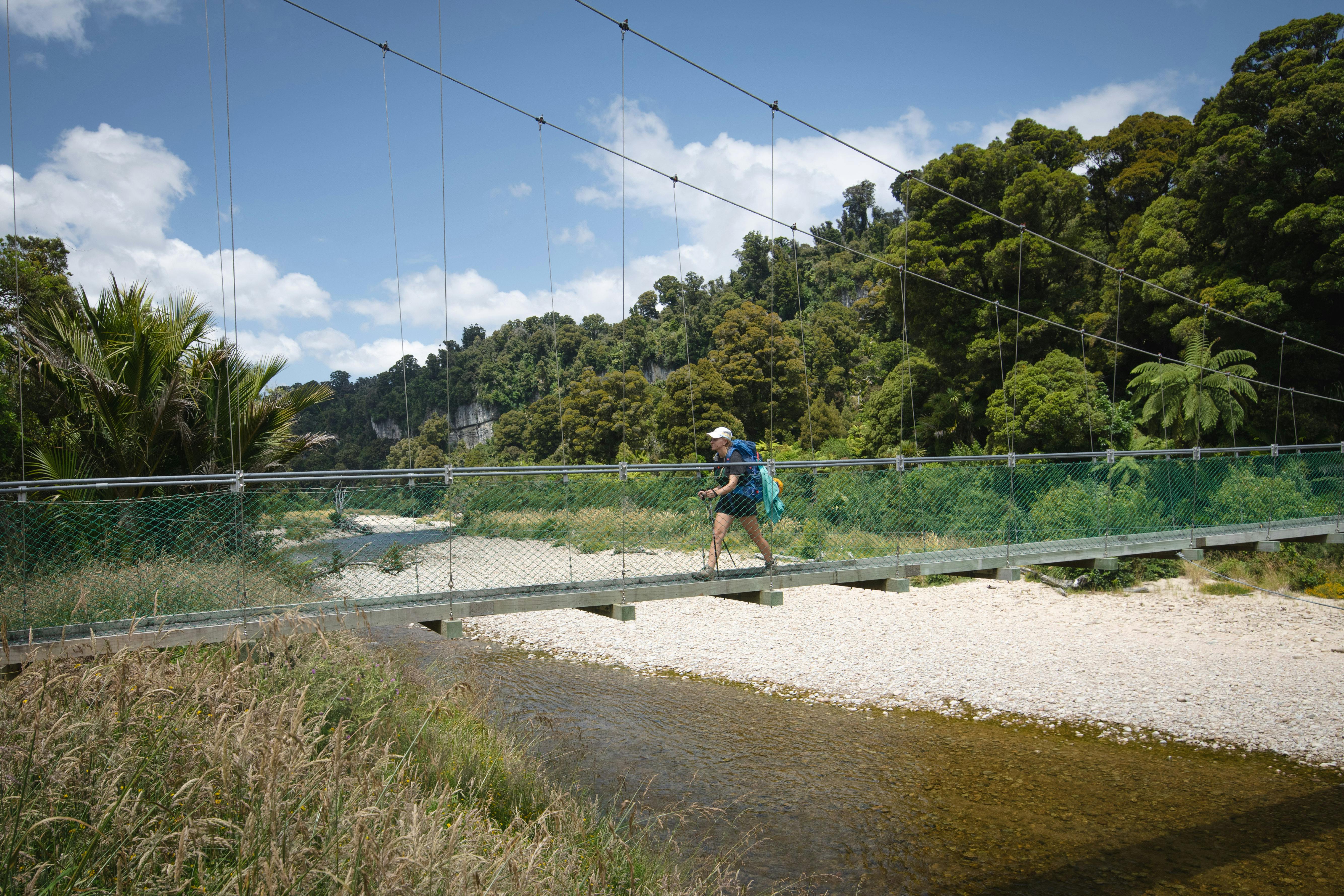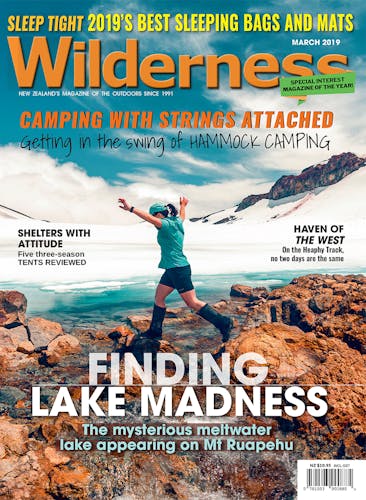The myriad of landscapes on the 78km Heaphy Track take you on a journey of such diversity, no two days feel like the same tramp.
With seven hours of walking behind me, I reached the day’s low point at Boot Pole Corner – a self-explanatory landmark on an otherwise nondescript curve on the Heaphy Track.
Exhausted, and sprawled on the ground, I felt mocked by the weathered footwear tied to the totem – if the owners could hang up their boots here, why couldn’t I?
Leaning back on my pack, I drained the last of the lemon-infused water from my reservoir, and searched my snack pocket for a cure to my deflated energy.
It had been a long day under a hot sun, and having decided to skip Perry Saddle Hut for Gouland Downs campsite – a further 7km – I had only myself to blame for my exhaustion.
My group had set off from Brown Hut car park at around 8.30 that morning, ready to tackle what would be the longest day on our Heaphy journey – 24.5km.
It was New Year’s Eve, and as I lay there on the track, I wondered if staying horizontal into 2019 might be a good resolution.
The walk to Perry Saddle Hut – where most walkers stop for the night – had been almost entirely uphill, with infrequent views of the Aorere River shining below the impressive Mt Olympus.
The hut itself offers some of the best alpine views on the Heaphy, and from the deck it’s easy to spy kea screaming around the tops of Mt Perry.
From the saddle, the scenery changes dramatically – the bush replaced with tussock and hardy scrub as the track winds downhill into Gouland Downs and around the now unforgettable Boot Pole Corner.
Having gobbled some chocolate and endured a deserved ribbing from my group, it was back on the track to follow a river-gouged valley to the eight-bunk Gouland Downs Hut.
The quaint accommodation, painted green with a burgundy corrugated iron roof, offers character somewhat missing from the track’s newer huts, and its resident pair of takahē make the stay more than worth the extra kilometres.
After dinner, which was spent fighting off the weka creeping under the picnic table, fog descended as the sun slid from view, and the Downs – now more Ghoulish than Gouland – took on an eerie quality. A wide-eyed ruru swooped around the camp and great spotted kiwi screamed across the tussock to one another, as though lost in the fog and desperate to reunite.
Keen to spot one, our group split up to explore. I quickly found one of the area’s cave systems just minutes from the hut, its entrance guarded by dozens of cave weta clinging to the ceiling. One dropped to the floor with a thick, earthy thud, and my desire to enter evaporated like mist.
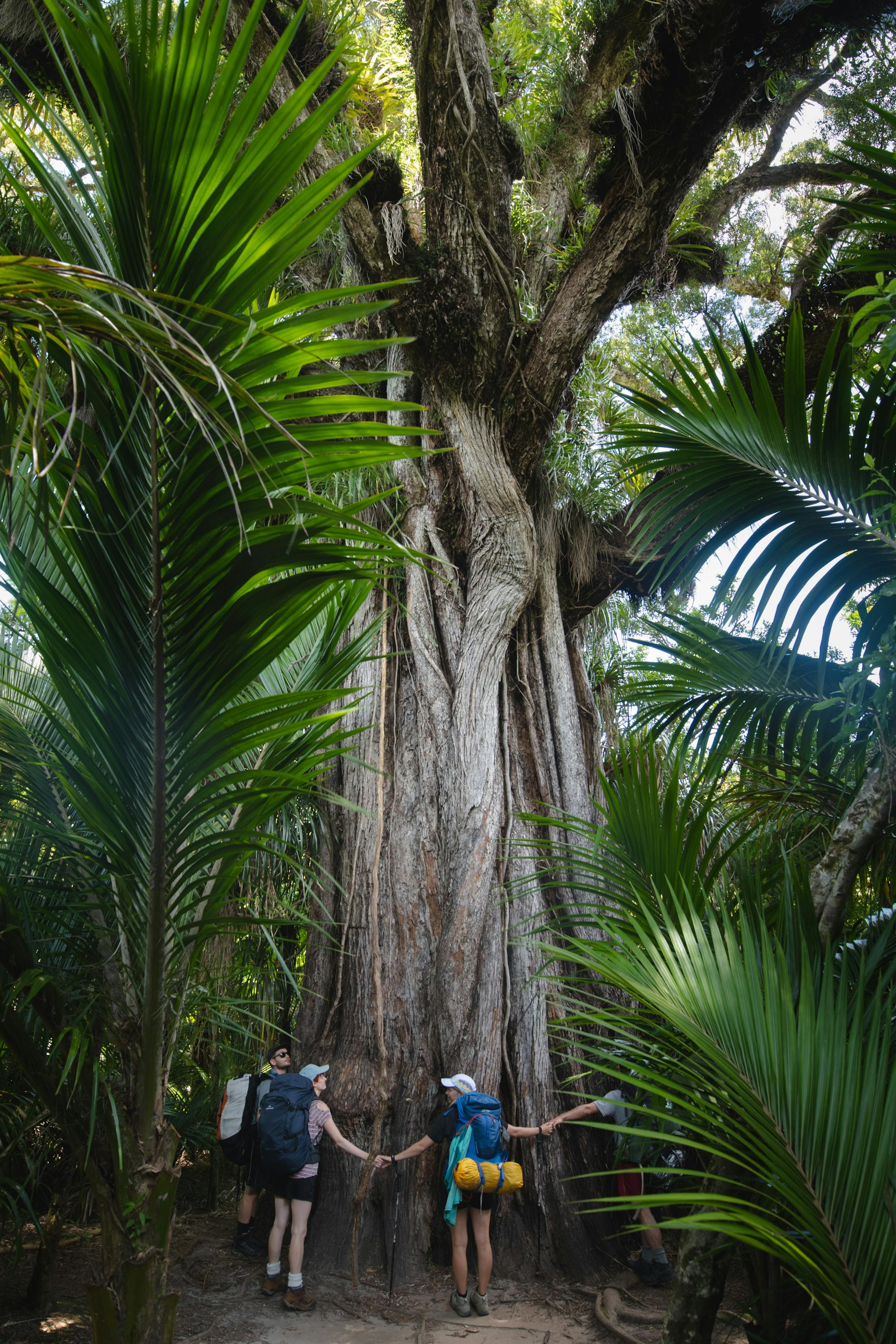
No kiwi was spotted that night, and we hit the hay around 11pm – my quietest New Year’s Eve in a long time.
The following morning, I woke before sun-up to the sound of kiwi close by. I snuck out of the tent to try my luck again in the foggy pre-dawn.
A rustle alerted from thick tussock, and, convinced my lifelong dream of seeing wild kiwi was about to come true, I fixed my red light into the tangle.
The culprit – a squat takahē – honked at me like a clown nose as it noticed my presence, and I couldn’t help but laugh at my disappointment. My grandparents lived through a time when this taonga was thought extinct and here I was disappointed to spot one of our rarest birds in the wild. Talk about perspective.
Since their famous rediscovery in Fiordland’s Murchison Mountains in 1948, takahē numbers have enjoyed a tumultuous increase under the intensive care of conservationists, reaching 300 birds in 2016, and now sitting somewhere around 350.
Close to 10 per cent of New Zealand’s takahē can be found on the Heaphy Track, and Kahurangi National Park is the only place the general public can spot one in the wild – the Murchison Mountains being accessible only by permit.
Glen Greaves, DOC senior ranger for takahē, is excited for the bird’s future and says the Heaphy population is doing “far better than expected”.
Of the 30 birds released in Gouland Downs in 2018, 29 were still alive at last count, and last season several chicks successfully hatched to further boost numbers.
“We won’t know the full extent until we’ve caught the adults, weighed them, and done a health check, but the fact they’re still alive and the mortality rate is so low suggests the site is suitable,” he says.
While Gouland Downs has proved successful so far, Greaves says it’s a suboptimal habitat for the takahē.
“The tussock there isn’t as nutritious as in the Murchison Mountains, but there is enough food to keep them alive, and the weather and geography is more benign so there are fewer deaths due to cold, avalanche and misadventure,” he says.
The Heaphy Track’s accessibility to people was an important factor for choosing the site, Greaves says.
“We want to pass on the message of how special the takahē is, and it’s very different seeing them on the Heaphy than it is seeing them in a zoo.”
A further 10 birds are expected to be released at Gouland Downs this year.
The pay-off for a long first day was that our second day would be the shortest. We ate breakfast in brilliant New Year’s Day sunshine, taking the opportunity to dry our dripping tents after a damp night.
Bidding farewell to the takahē and good riddance to the weka, we descended into the beech forest which stands starkly behind the hut, not daring to encroach on the cleared land.
Mossy and enchanting, the silent bush feels full of secrets, but the atmospheric forest dwindles as suddenly as it begins as the track leads west over a tussocky plain, traversing three bridges, before an undulating climb to Saxon Hut.
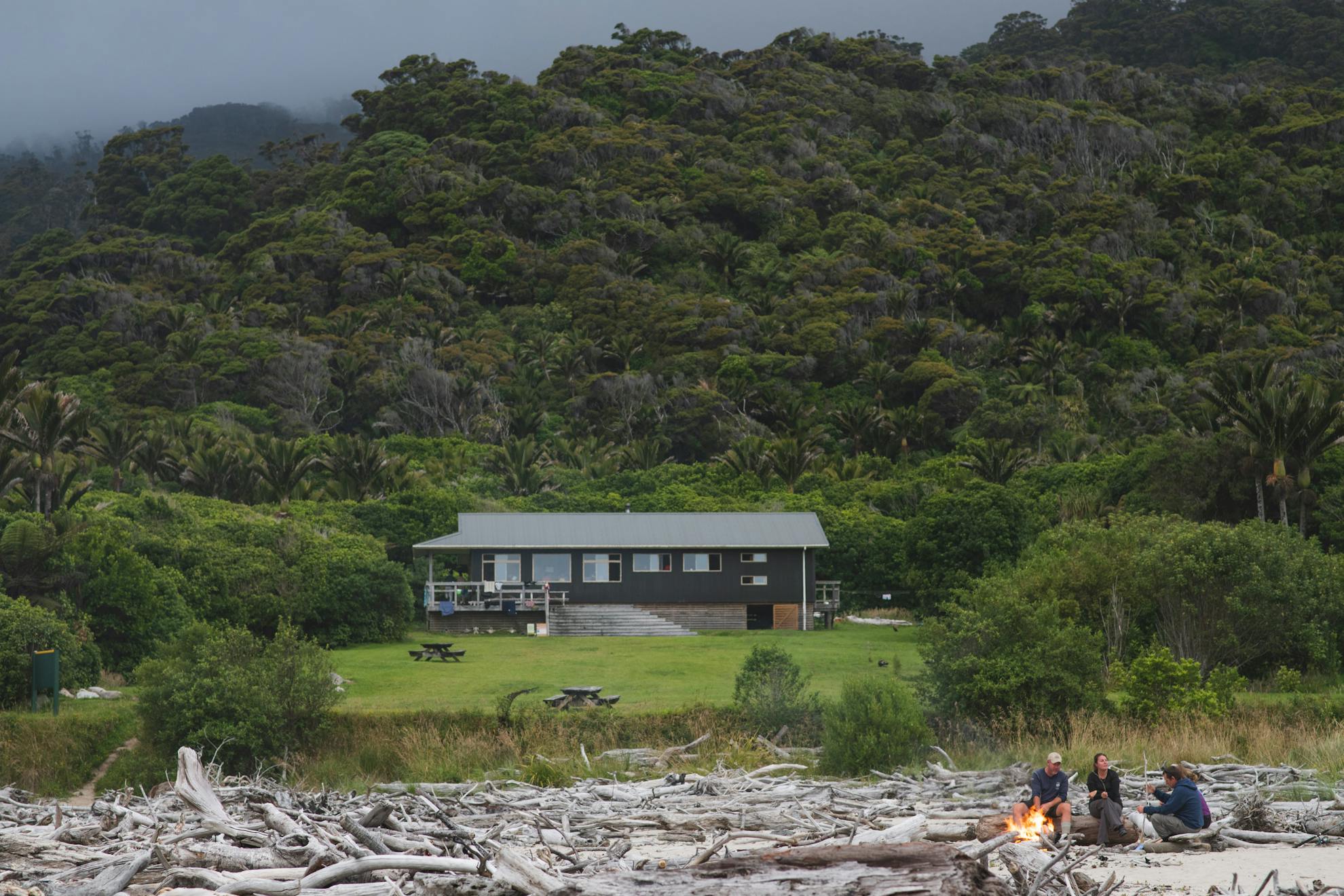
We stopped for an early lunch, despite not working nearly hard enough to warrant it, and overheard other trampers talk of a swimming hole nearby.
Leaving packs zipped-up tightly against marauding weka, we followed the foot-worn grass to soak in the tannin-stained water – a glorious reward for our meagre 1.5hr morning walk. Tramping is all about the rewards.
The three hour walk to James Mackay Hut starts kindly, traversing a relatively flat and picturesque valley for a kilometre, before climbing into gorgeous bush alongside the Saxon River.
Here we found the first signs of Powelliphanta – Kahurangi’s famous carnivorous snails – their empty shells littering the edge of the track. I stubbed my toes and stumbled many times trying to spot a live specimen on the trackside, instead of watching my feet.
The climb gradually ascends more than 100m over 3km, and crosses the invisible border between the Tasman and West Coast districts, marked by a wooden bench.
The ensuing descent offers greater variation in scenery, including wetlands, curious boulders, and a welcome boardwalk bridging a valley floor. The gorgeous James Mackay Hut – newest on the Heaphy – was a midway indulgence for us, and not having to set up tents and inflate mattresses made our arrival all the sweeter.
The hut’s views extend down the valley to the mouth of the Heaphy River – our next destination – and heightens the anticipation of reaching the sea.
Shortly after arriving, the weather closed in from the west, shrouding the view in a swift cloud that brought drizzle light enough to allow exploration, but heavy enough to make me pleased we weren’t camping.
Hoping the wet would be ideal for Powelliphanta, we donned headlamps and raincoats, and set off for Deception Creek, where hours earlier we had enjoyed another feet-soothing soak.
Three snails were quickly spotted oozing along the banks – their pace not too dissimilar to mine on the previous day near Boot Pole Corner.
These were the only living specimens we spotted over four days – proof it pays to venture from the warmth of the hut.
Two species of Powelliphanta are found around James Mackay Hut; the superba harveyi and superba prouseorum – the latter being the largest discovered so far, reaching up to 9cm across.
DOC biodiversity senior ranger Jess Curtis says the two species like mid to higher level altitudes, and are usually found under moss and tussock in boggy areas.
The curious snails eat earthworms and slugs – probably quite slowly – but unfortunately make easy prey for birds and introduced predators.
“The Powelliphanta are predated on by lots of species including rats, possums and pigs – but also weka,” Curtis says.
“Each species that eats a snail makes a different mark, so you can tell what has killed it by looking at the shell.”
Pest control and 1080 operations have “done wonders in the park”, and helped preserve this taonga, Curtis says.
DOC urges walkers and mountain bikers do their part too by keeping an eye on where they are going.
Gloomy cloud was still tapping at the windows when we departed our accommodation the next morning, chuffed for a day of downhill.
The bush felt fresh under its glistening layer of rain, which petered out almost immediately, as if to spite our decision to wear raincoats.
The morning belonged to the charming South Island robin, a bird so curious it can’t help but hop over to introduce itself if you stand still awhile. One was kind enough to give me a Disney princess moment, landing on my outstretched tramping pole, before flitting off to some new curiosity.
We were lucky to also spot a squad of riflemen – New Zealand’s smallest bird – shooting rapidfire chirps at us from the trackside.
The descent of nearly 700m lasted around three hours, and offered spectacular vantages of the Heaphy River below, its pale shores contrasting with the cola-coloured water and greenery.
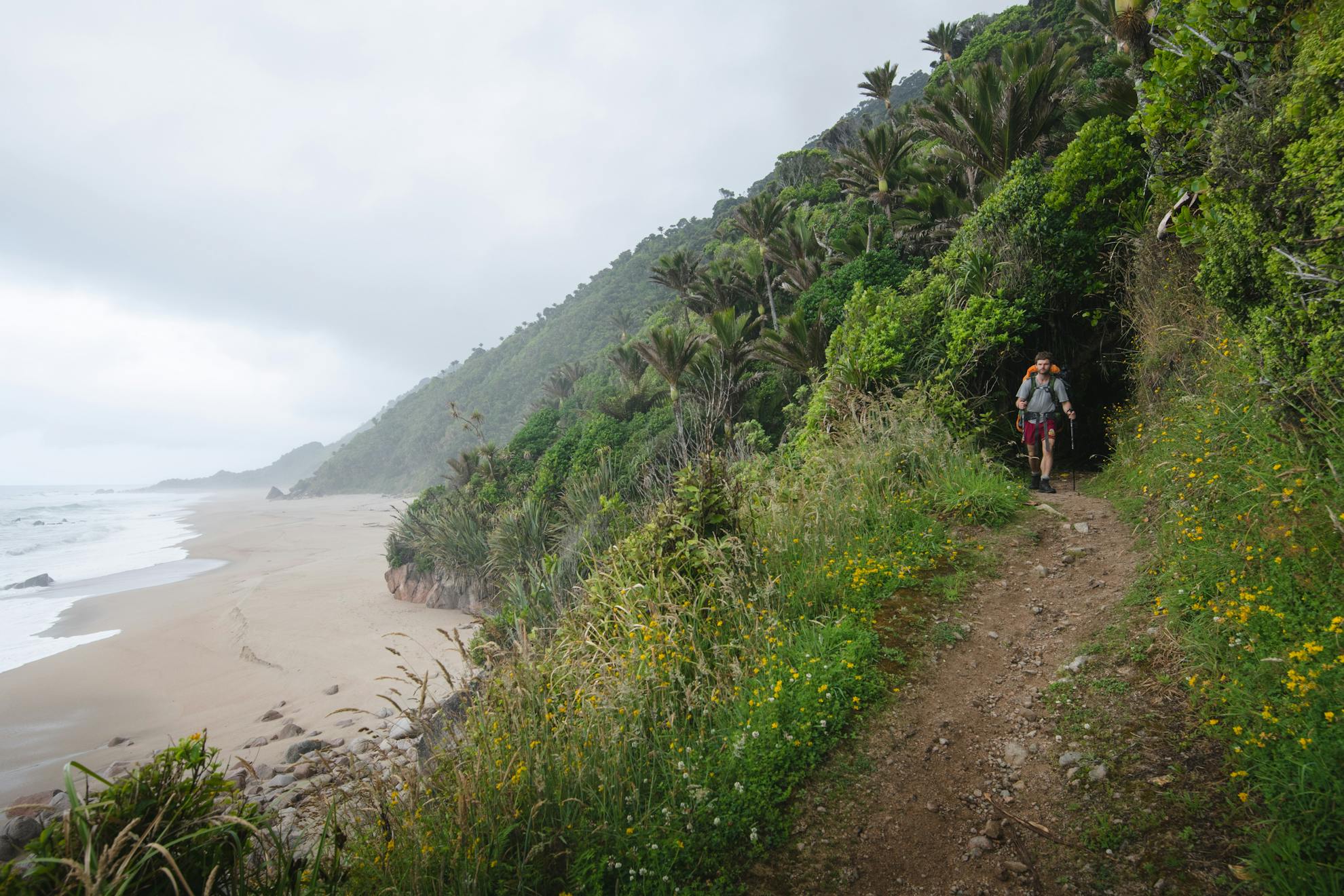
A stressful lunch at Lewis Hut was spent on high weka alert, with sandflies adding their special brand of trauma to the equation.
The 148m Heaphy Bridge – the largest deck suspension bridge ever built by DOC – brings the track into a new chapter; one of flatter terrain and distinctive layers of flora.
Nikau palms sprout defiantly from the canopy to lend tropical vibes to the scenery and several giant rata twinge the neck muscles and capture the imagination. It’s an absolute wonderland.
The wildlife continues to impress, with kereru, tomtit, pīwakawaka, bellbird and tui constantly catching the peripheral vision.
A colony of long tailed bats – one of two surviving bat species endemic to New Zealand – was discovered upstream of the Gunner River suspension bridge in December 2017, DOC’s Jess Curtis says.
That the colony could go undetected for so long shows the isolated wildness of the area, and gives hope to those searching Kahurangi for the South Island kōkako.
The bat colony has 81 individuals with 52 breeding females, but is threatened by the high numbers of rodents in the Heaphy Valley. DOC is increasing rodent control to help boost the colony’s population, Curtis says.
Another rare find near Gunner River is whio/blue duck. “Just recently a family of whio was spotted approximately 1km upstream from the Gunner River bridge,” she says.
The track begins to feel very Indiana Jones as it nears the sea. To the left, limestone pillars and cliffs are strangled in supplejack vines, while the tannin-brown river slides by on the right. The occasional track transport plane flies in low through the valley, completing the picture.
The Heaphy Hut was, for me, the jewel in the crown of the track. From its deck, a sloping lawn leads to the sandy riverbank, a graveyard for bleached driftwood.
The ocean pounds at the rivermouth, and after three full days of walking in bush, the salty breeze and open space is exhilarating.
It should be the perfect spot to wind down after an exhausting day, but the sandflies are thick and hungry, and unless you’re covered head to toe, relaxation is impossible.
Upon arrival, I found some of my group held captive in their tent with literally hundreds of sandflies haunting their tent zips inside the vestibule as if waiting patiently for it to be opened.
The sea breeze seemed to keep the winged horrors away, so after hurriedly putting up my tent, I took a blissful dip in the river and walked the impressive beach, marvelling at the mist sweeping over the mountains like cloud over a wing.
I slept deeply, waking just once to search unsuccessfully for kiwi in my underwear after a nearby call woke me.
The final leg of the track was so impressively picturesque, I couldn’t recommend walking the track in reverse for the fact it would be massively anticlimactic.
With a shuttle booked for 1pm, and five hours of walking ahead, we were on the track by 7am – happy to leave behind the sandflies which were already forming dark clouds around us.
Almost entirely coastal, this section provides a full-on assault of the senses, from the deep rumble of boulders rolling in the surf to the salt air enticing the nostrils.
The morning was dull and cloudy, but well-suited to the tumbling ocean. The headlands were rendered by sea mist to beautifully-graded shades of grey, the furthest almost fading into cloud altogether, and where the previous days were a constant flurry of fauna, the coast was quiet and lonesome.
Nikau palms outline track sections like guards of honour, and several suspension bridges allow stunning views of the rivers, eager to meet the sea.
Nettle Beach, backed by a lush valley and spectacular waterfalls, was impossibly beautiful in the mist, and a wonderful spot for a quick feed.
Intermittent headlands ensure the walk isn’t entirely flat, but compared to previous days, it’s easy to make good time, and if the tide and conditions allow, it’s possible to walk on the sand instead of the track.
The sun burned through by the time we reached Scotts Beach, making me grateful for the moody clouds of morning – blue skies didn’t quite have the same charm on the landscape.
The final push to Kohaihai had my feet at their absolute limit. Having walked the Abel Tasman Coast Track before the Heaphy, they had endured well over 120km in nine days, and the last hill was agony.
A viewpoint on the descent gives a taunting glimpse of the car park, which looks much closer than it is, but don’t be fooled – it’s a little ways yet.
The boots were off and my feet were in the river the moment I arrived at Kohaihai Shelter, and although my time on the Heaphy should have wisened me to the sandflies, I paid for my haste with blood – but really, what is a few more stars in the sky?
Our shuttle dropped us at Karamea Airport for our flight with Air Charter Karamea to Takaka – an incredibly scenic, if slightly turbulent, trip that had a few knuckles showing white.
Our pilot’s parting comment after a smooth landing was “come back on a nice day”, and after a brilliant trip, I would love to.
- Distance
- 78.4km
- Total Ascent
- 4068m
- Grade
- Moderate
- Accom.
- Brown Hut, Perry Saddle Hut, Gouland Downs Hut, Saxon Hut, James Mackay Hut, Lewis Hut, Heaphy Hut. Multiple campsites.
- Access
- From Aorere Valley Road end, Collingwood
- Map
- BP23, BP22





